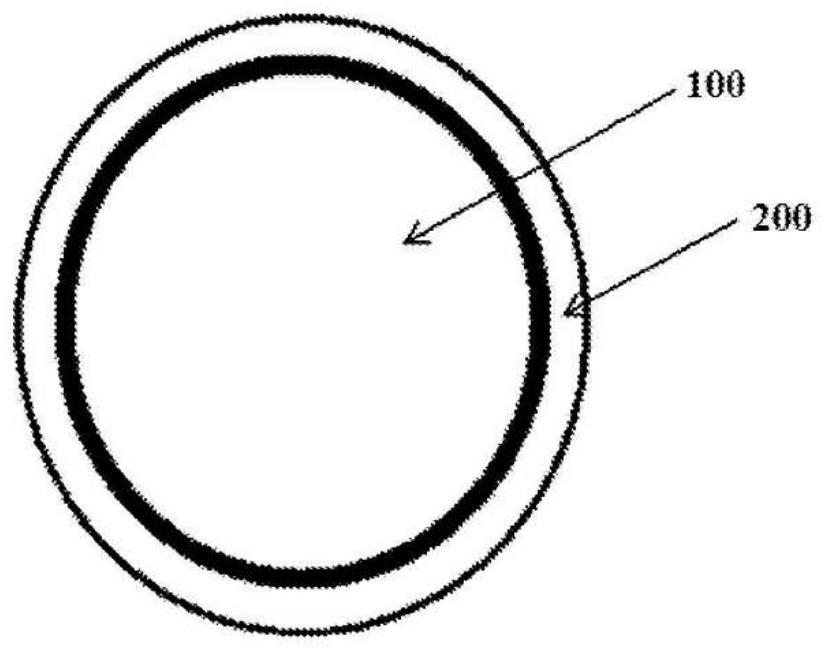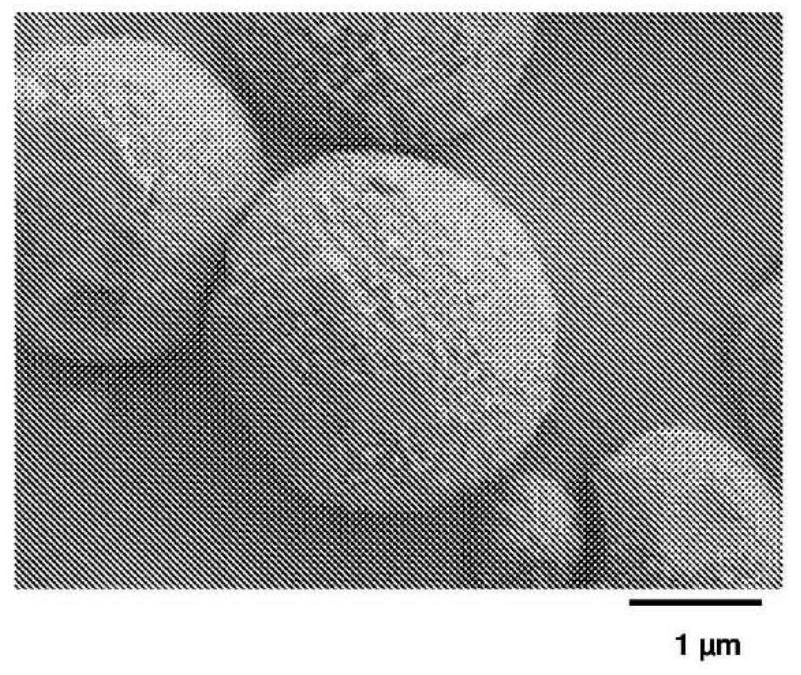Composite and method of preparing same
A technology of complexes and complexes, applied in the field of complexes, which can solve problems such as the difficulty of preparing and dispersing inorganic compounds
- Summary
- Abstract
- Description
- Claims
- Application Information
AI Technical Summary
Problems solved by technology
Method used
Image
Examples
Embodiment 1
[0108] Embodiment 1: the synthesis of carboxylic acid activated zinc powder (complex A)
[0109] Fresh zinc powder (2 g) and benzoic acid (0.2 g) were mixed in N,N-dimethylformamide (20 ml), and the mixture was stirred at 100° C. for 20 hours. After cooling to room temperature, the solid residue of complex A was collected by filtration and washed with acetone. The particle size range of the synthesized Complex A was measured to be from about 400 nm to 1,000 nm.
[0110] A schematic representation of the structure of the complex formed is shown in figure 1 , wherein in this case zinc is present in the core 100 and carboxylate is present in the protective layer 200 . from Figure 2A It can be seen that the deposited benzoic acid layer reacts with the zinc core to form a uniform shell of zinc benzoate on the zinc metal particles. The thickness of the protective layer depends on parameters such as the amount of carboxylic acid used and the reaction temperature and duration. ...
Embodiment 2
[0112] Embodiment 2: the synthesis of amino acid activated zinc powder (complex B)
[0113] Fresh zinc powder (2 g) was mixed with histidine (0.1 g) in ethanol (0.2 ml), and the mixture was stirred at 120°C for 24 hours. After cooling to room temperature, the solid residue of complex B was collected. The particle size range of the synthesized Complex B was measured to be about 400 nm to 1,000 nm.
[0114] A schematic representation of the structure of the complex formed is shown in figure 1 , wherein in this case zinc is present in the core 100 and histidine is present in the protective layer 200 in the form of a zinc-histidine complex. From Figure 2B It can be seen that the deposited histidine layer reacts with the zinc core to form a uniform shell of zinc-histidine complex on the zinc metal particles. Figure 3B The presence of a protective layer influenced by the precursor histidine is further confirmed, with the shell-covered zinc particles clearly observed in the figu...
Embodiment 3
[0115] Embodiment 3: the synthesis of inorganic acid activated titanium powder (composite C)
[0116] Fresh titanium powder (1 g) was mixed with concentrated phosphoric acid (0.03 ml), and the mixture was stirred at 130°C for 6 hours. After cooling to room temperature, the solid residue of complex C was collected. The particle size range of the synthesized Complex C was measured to be about 400 nm to 1,000 nm.
[0117] A schematic representation of the structure of the complex formed is shown in figure 1 , where in this case titanium is present in the core 100 and a hydrated metal oxide salt is present in the protective layer 200 . From Figure 2C It can be seen that the deposited phosphoric acid layer reacts with the titanium core to form a uniform shell of titanium oxide phosphate hydrate on the titanium metal particles. Figure 3C The presence of a protective layer influenced by the precursor phosphoric acid is further confirmed, where the shell covering the titanium p...
PUM
| Property | Measurement | Unit |
|---|---|---|
| Granularity | aaaaa | aaaaa |
Abstract
Description
Claims
Application Information
 Login to View More
Login to View More - R&D
- Intellectual Property
- Life Sciences
- Materials
- Tech Scout
- Unparalleled Data Quality
- Higher Quality Content
- 60% Fewer Hallucinations
Browse by: Latest US Patents, China's latest patents, Technical Efficacy Thesaurus, Application Domain, Technology Topic, Popular Technical Reports.
© 2025 PatSnap. All rights reserved.Legal|Privacy policy|Modern Slavery Act Transparency Statement|Sitemap|About US| Contact US: help@patsnap.com



